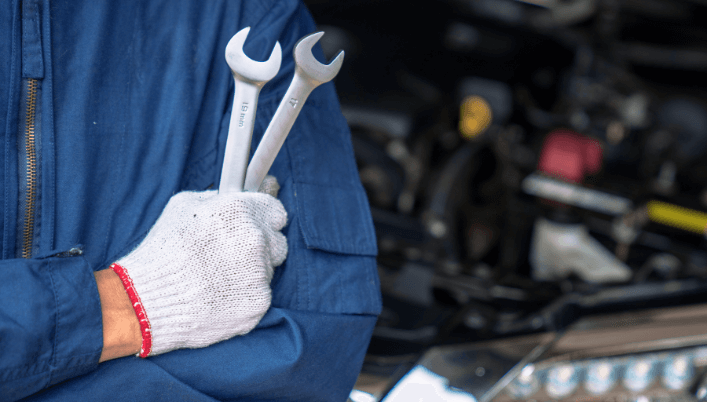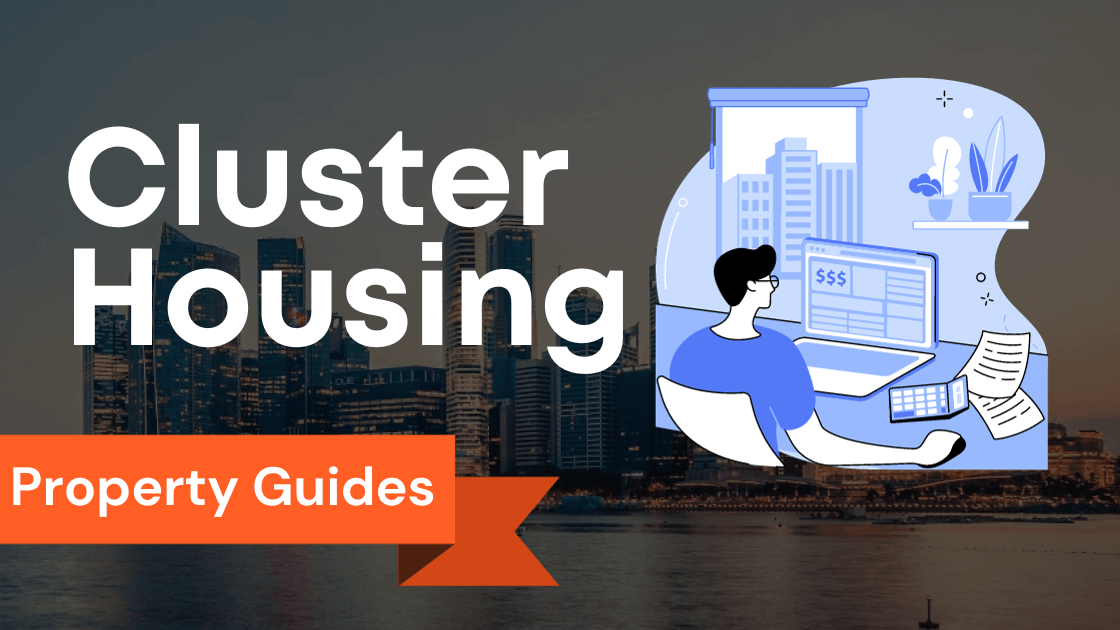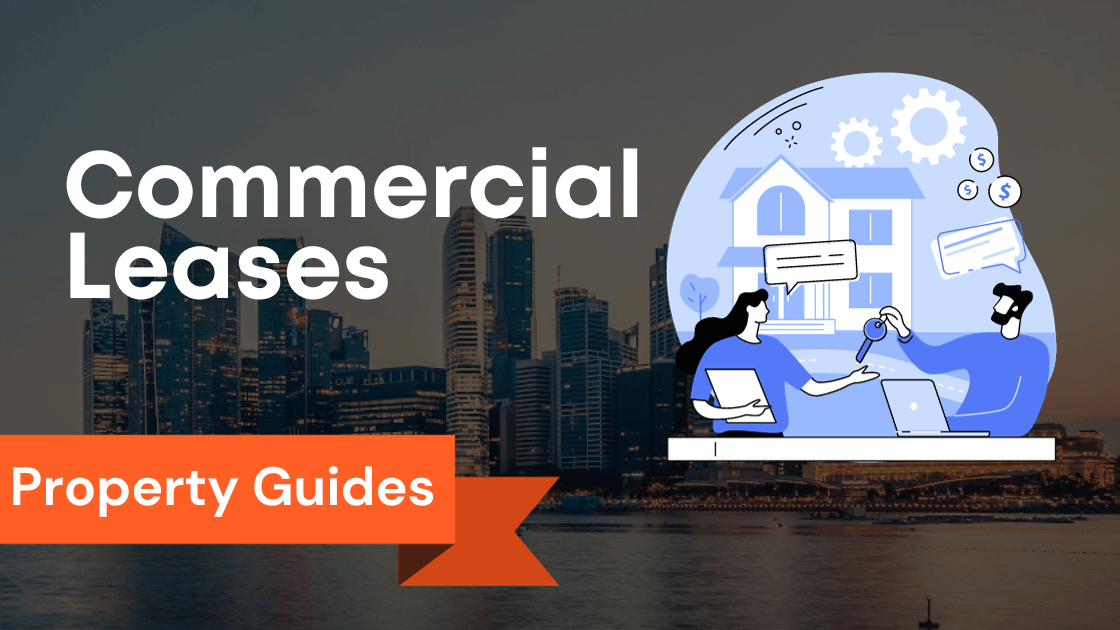
What is Common Area Maintenance (CAM)?
Common Area Maintenance (CAM) refers to the ongoing maintenance and operation of the common areas in a commercial real estate property.
All tenants share these areas and are not leased or occupied by individual businesses.
CAM includes the costs and expenses associated with the upkeep, repair, and cleaning of these shared areas.
Definition of CAM
In a commercial lease agreement, the CAM clause outlines the responsibilities of the tenant and the landlord regarding the maintenance and operation of common areas.
The clause determines how CAM costs are distributed and what expenses are included in the calculation.
CAM expenses typically include operating expenses such as cleaning, landscaping, maintenance, repairs, and utilities for common areas like lobbies, hallways, parking lots, elevators, and restrooms.
CAM Costs and Expenses
CAM costs, and expenses can vary depending on the size and type of the property.
Some everyday expenses include janitorial services, landscaping, snow removal, pest control, security, trash removal, insurance, management fees, and property taxes.
Landlords are responsible for estimating these costs and including them in the tenant’s lease agreement.
However, actual CAM costs can fluctuate, especially if there are unexpected repairs or additional expenses.
CAM Charges for Tenants and Landlords
Tenants are typically required to pay a CAM charge in addition to their base rent.
The CAM charge is calculated based on the tenant’s pro-rata share of the total CAM expenses for the property.
This means that the tenant’s share is determined by the ratio of their leased space to the entire leasable space in the property.
Some leases may include a cap on CAM charges, limiting the maximum amount a tenant has to pay.
The lease agreement should clearly outline how CAM charges are calculated, any annual increases, and whether management fees and property taxes are included.
It’s important for both tenants and landlords to carefully review and negotiate the CAM provisions before signing a lease agreement.
CAM charges play a crucial role in maintaining the common areas of commercial property.
They ensure that all tenants contribute to the upkeep and operation of shared spaces.
By sharing these expenses, the cost burden is distributed among multiple tenants, making it more affordable for everyone.
In conclusion, understanding CAM and its associated costs is essential for both tenants and landlords in commercial real estate.
Tenants need to consider these expenses when budgeting for their business location, while landlords should accurately estimate and disclose CAM charges to potential tenants.
Clear communication and transparency regarding CAM can lead to a fair and mutually beneficial.
Key Takeaways
- CAM Definition: CAM stands for Common Area Maintenance and refers to the maintenance and operation of shared areas in commercial real estate properties, such as lobbies, parking lots, and restrooms.
- CAM Costs: CAM expenses include cleaning, landscaping, repairs, and utilities for common areas. These costs can vary based on property size and type.
- CAM Charges: Tenants are typically required to pay CAM charges in addition to their base rent. The charges are calculated based on the tenant’s share of the total CAM expenses.
- Lease Types: Different lease types, such as full-service gross leases and triple net leases, impact how CAM charges are handled and included in rent.
- Negotiating CAM Costs: Both tenants and landlords can negotiate CAM costs, including caps on annual increases and cost-saving measures.
- CAM Disputes: CAM disputes can arise from various factors, including disagreements over common area definitions and wide variations in charges between properties.
- Calculating CAM Charges: CAM charges are typically calculated based on the formula: CAM Charges = Total CAM Costs / Total Rentable Area.
- Factors Affecting CAM Charges: Operating costs, budgets, and square footage allocation can influence CAM charges.
- Tips for Negotiating CAM Costs: Tenants should review lease agreements, ask for CAM charge caps, and propose cost-saving measures. Landlords should provide transparency and consider caps as well.
- CAM in Singapore: In Singapore, CAM charges are shared among tenants and can include cleaning, security, and maintenance expenses for common areas. CAM caps may also be included in leases.
CAM in Commercial Real Estate

Commercial real estate owners and tenants are aware of the term CAM, which stands for Common Area Maintenance.
CAM charges are an essential component of a commercial lease agreement, and understanding them is crucial for both landlords and tenants.
CAM Charges in Commercial Leases
CAM charges, also known as CAM costs, are expenses related to the maintenance and operation of common areas within a commercial property.
These areas can include lobbies, hallways, elevators, parking lots, and landscaping.
In most commercial leases, tenants are responsible for paying a proportionate share of CAM charges in addition to their base rent.
Calculating CAM: CAM charges can be calculated in various ways, depending on the lease agreement.
The most common method is to determine the total operating costs for the property and allocate them among the tenants based on their proportionate share of the total leasable Area.
Lease Types: Different lease types can impact the allocation of CAM charges.
A full-service gross lease typically includes CAM charges as part of the base rent, while a triple net lease (NNN lease) requires tenants to pay their share of CAM charges separately.
Negotiating CAM Costs in Commercial Leases:
Both tenants and landlords have the opportunity to negotiate CAM costs during lease negotiations.
Here are some tips for both parties:
Tips for Tenants:
- Review the lease agreement thoroughly and understand how CAM charges are calculated.
- Negotiate a cap on annual CAM increases to avoid unexpected cost spikes.
- Consider hiring a professional real estate advisor to help you negotiate favorable lease terms.
Tips for Landlords:
- Clearly define which expenses are included in CAM charges and provide detailed documentation to support the costs.
- Be open to negotiating CAM costs to attract potential tenants and maintain long-term relationships.
- Consult with a real estate attorney to ensure the lease agreement is legally sound.
Common CAM Disputes:
CAM disputes can arise from various factors, including broken sections within the common areas, disagreement over the definition of common areas versus the tenant’s premise, or issues related to loading docks and outdoor spaces.
Disputes can also occur due to wide variations in CAM charges between different commercial properties.
In conclusion, understanding CAM charges and their calculation is crucial for both commercial property owners and tenants.
Proper negotiation and communication can help create transparent and mutually beneficial lease agreements.
It is always advisable to seek professional advice and consult legal experts to ensure that CAM costs are fair and reasonable for all parties involved in a commercial lease agreement.
Calculating CAM Charges

When renting a commercial space, one of the additional expenses that tenants need to consider is Common Area Maintenance (CAM) charges.
These charges cover the costs associated with maintaining and operating the common areas of a building or complex, such as lobbies, hallways, elevators, parking lots, and landscaping.
Understanding how CAM charges are calculated is essential for tenants to determine their overall leasing costs accurately.
CAM Charge Formula
The CAM charges are typically calculated using a formula that takes into account various factors.
The most common formula is:
CAM Charges = Total Common Area Maintenance Costs / Total Rentable Area
This formula divides the total CAM costs by the total rentable Area of the property, usually measured in square feet.
The resulting CAM charge is then applied to each tenant based on their proportionate share of the total rentable Area.
CAM Charge Examples
To illustrate how CAM charges work, let’s consider two examples:
Example 1:Total Common Area Maintenance Costs: $100,000Total Rentable Area: 10,000 square feet CAM Charges = $100,000 / 10,000 square feet = $10 per square footIf a tenant has leased 1,500 square feet, their CAM charge would be $10 x 1,500 square feet = $15,000.
Example 2:Total Common Area Maintenance Costs: $75,000Total Rentable Area: 50,000 square feet CAM Charges = $75,000 / 50,000 square feet = $1.
50 per square footFor a tenant with a leased space of 2,500 square feet, their CAM charge would be $1.
50 x 2,500 square feet = $3,750.
Factors that Affect CAM Charges
Several factors can influence the CAM charges for a commercial space.
These factors can include:
- Operating Costs: The type and quality of maintenance and services provided, such as janitorial services, security, repairs, and utilities, can impact the CAM charges.
- Budgets: The budget allocated for maintaining the common areas of the property can affect the CAM charges. Higher budgets may result in higher costs for tenants.
- Monthly Basis: CAM charges are typically calculated on a monthly basis. The annual CAM costs are divided by twelve to determine the monthly charge.
- Pro-rata Basis: The CAM charges are distributed among tenants based on their proportionate share of the total rentable Area. Larger tenants with more space will have higher CAM charges.
- Square Foot Basis: CAM charges are often calculated on a per-square-foot basis. The overall rentable Area of the property determines the total CAM costs.
Tenants need to review the lease agreement carefully to understand how CAM charges are determined and what expenses are included.
CAM charges can significantly impact a tenant’s overall leasing costs, so it’s crucial to have a clear understanding of how they are calculated.
In conclusion, calculating CAM charges involves using a formula that takes into account the total CAM costs and the total rentable Area of the property.
Several factors can affect CAM charges, including operating costs, budgets, and the proportionate share of the total rentable Area.
Tenants should review their lease agreement to understand how CAM charges are calculated to avoid any surprises in their leasing costs.
Tips for Negotiating CAM Costs

Tips for Tenants
When it comes to negotiating Common Area Maintenance (CAM) costs, tenants should keep a few essential tips in mind.
First, it’s important to thoroughly review the terms of your lease agreement before engaging in any negotiations.
Understanding your current lease terms and the specific responsibilities of both the tenant and landlord will help you negotiate more effectively.
Second, tenants should be prepared to ask for a cap on CAM charges.
A hat is a limit on the amount that a tenant will have to contribute towards CAM costs.
This can help protect tenants from unexpected increases in expenses and provide a level of predictability for budgeting purposes.
Additionally, tenants should carefully review the breakdown of CAM charges to ensure that they are not being billed for expenses that should be the responsibility of the landlord.
It’s essential to understand what costs are included in CAM charges and negotiate to have any unnecessary or inappropriate expenses removed.
Lastly, tenants should consider proposing alternative solutions if they are on a tight budget.
This could include suggesting a more reasonable CAM budget or asking for certain non-essential services to be removed or reduced.
Creatively working with the landlord to find mutually beneficial cost-saving measures can lead to successful negotiations.
Tips for Landlords
Landlords also play a crucial role in negotiating CAM costs.
First and foremost, landlords should provide clear and transparent communication regarding CAM charges and make sure tenants understand how these costs are calculated.
This transparency and open dialogue will help build trust and a positive working relationship with tenants.
To ensure fairness and avoid any disputes, landlords should consider implementing a cap on CAM charges.
This can protect both parties from unexpected cost increases and create a more stable financial arrangement.
Landlords should also clearly outline what expenses are included in CAM charges and be willing to address any concerns or questions raised by tenants.
It’s common to hear that tenants often feel that a large portion of retail CAM charges go towards expenses that primarily benefit the landlord, such as marketing or capital improvements.
To address this, landlords can work with tenants to find a fair allocation of fees and consider alternative ways to fund certain costs.
This could include exploring external sources of funding or seeking tenant contributions through separate agreements.
Common CAM Negotiation Pitfalls
During CAM cost negotiations, there are several common pitfalls that both tenants and landlords should be aware of.
One of these is assuming that all expenses are included in CAM charges.
Tenants need to review their lease agreement and understand which costs are the responsibility of the landlord and which are passed onto the tenant.
Clarifying this can avoid misunderstandings and potential conflicts in the future.
Another common pitfall is the need for more documentation.
Both tenants and landlords should keep detailed records of all CAM-related expenses and calculations.
This documentation will serve as evidence and provide clarity in case of any disputes or disagreements.
In summary, negotiating CAM costs requires open communication, an understanding of lease terms, and a willingness to find mutually beneficial solutions.
By following these tips for tenants and landlords, both parties can work together to establish fair and transparent CAM cost agreements.
CAM in Singapore
When it comes to commercial leases in Singapore, both landlords and tenants need to understand the concept of Common Area Maintenance (CAM).
CAM refers to the charges and expenses incurred for the maintenance and operation of common areas in commercial properties.
These charges are typically shared among all tenants in the building.
CAM Charges in Singapore Commercial Leases
CAM charges are an essential component of commercial leases in Singapore.
They cover various costs, including cleaning, security, landscaping, repairs, and maintenance of common areas such as lobbies, elevators, stairwells, parking lots, and shared amenities.
The specific CAM charges can vary depending on the terms of the lease agreement.
Typically, these charges are calculated based on a proportionate share of the tenant’s leased Area compared to the total leasable Area of the building.
It’s important for tenants to carefully review the lease agreement to understand the exact breakdown of CAM charges.
CAM Cap in Singapore Commercial Leases
To protect tenants from excessive CAM charges, some commercial leases in Singapore may include a CAM cap.
A CAM cap sets a maximum limit on the amount of CAM charges that can be passed on to tenants.
This ensures that tenants are not burdened with disproportionately high maintenance costs.
The CAM cap is typically expressed as a percentage of the base rent or as a fixed amount per square foot.
Landlords must adhere to the CAM cap stated in the lease agreement, and the landlord must bear any expenses beyond the cap.
CAM Regulations in Singapore
In Singapore, there are no specific regulations governing CAM charges in commercial leases.
However, it’s common for landlords and tenants to negotiate the terms of CAM charges during lease negotiations.
Both parties should carefully review the lease agreement and seek legal advice if needed to ensure a clear understanding of the CAM charges and their obligations.
It’s also important to note that CAM charges are separate from other operating expenses, such as property insurance, property taxes, and utilities.
These expenses are typically handled differently and may not be included in CAM charges.
In conclusion, understanding CAM charges, CAM caps, and the regulations surrounding them is crucial for both landlords and tenants in Singapore.
Clear communication, negotiation, and careful review of lease agreements are essential to ensure a fair and transparent allocation of maintenance costs in commercial properties.
Conclusion
Common Area Maintenance (CAM) in Singapore
In conclusion, understanding standard area maintenance (CAM) is essential for both landlords and tenants in commercial properties in Singapore.
It is a way to ensure that the shared common spaces within a building are properly maintained, and the costs are divided among the tenants.
One key point to note is that the type of lease you have will determine how CAM charges are handled.
In some leases, CAM charges may be included as part of the common area expenses, while in others, the tenant pays separate CAM charges.
Tenants need to know about CAM and what expenses are included in the common Area.
CAM expenses typically cover the costs of running and maintaining common areas, such as hallways, parking lots, and shared common spaces.
This includes janitorial costs, preventative maintenance, and other upkeep expenses.
For landlords, it is crucial to define CAM expenses clearly in the lease agreement to cover the actual costs incurred.
This helps to avoid disputes and ensures transparency in the CAM charges.
While standard area maintenance is more common in office buildings, it is also applicable to other types of commercial spaces.
Industrial CAM expenses, for example, may cover the maintenance of usable areas for tenants engaged in manufacturing or warehousing.
At the beginning of the year, landlords typically estimate the CAM charges and collect them from tenants on a regular basis.
These charges may be adjusted periodically to reflect actual expenses for the year.
Overall, standard area maintenance is an essential aspect of real estate investment in Singapore.
It ensures that the common areas of the building are well-maintained and contributes to a comfortable and safe environment for both tenants and visitors.
In summary, common area maintenance charges are part of the overall costs associated with leasing a commercial space.
Landlords and tenants should have a clear understanding of CAM and how it is determined and managed.
Frequently Asked Questions
What is Common Area Maintenance (CAM)?
What is included in CAM charges?
How are CAM charges calculated?
This means that tenants with larger spaces will generally have higher CAM charges.
Are CAM charges the same as maintenance fees?
They are the fees that cover the landlord’s direct expenses for maintaining the common areas of a property.
Are CAM charges included in a commercial lease?
It is essential for tenants to carefully review the lease agreement to understand the specific terms and how CAM charges are calculated.
Can tenants negotiate CAM charges?
It is recommended to discuss this with the landlord or property manager during lease negotiations.
What are the benefits of including CAM charges in a lease?
It helps to maintain a clean and well-maintained environment for everyone.
What is the difference between CAM charges and operating expenses?
Can CAM fee or charges increase during the lease term?
It is common for leases to include provisions that allow for annual adjustments to CAM charges based on actual costs or inflation.
What should tenants know about CAM before signing a lease?
It is also important to inquire about any potential increases in CAM charges and how they are calculated.












